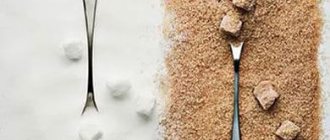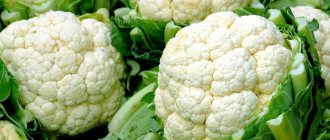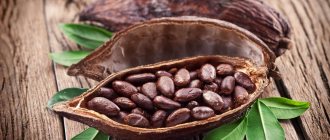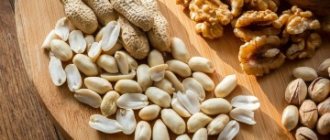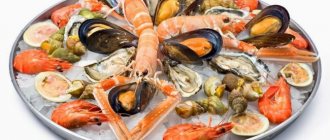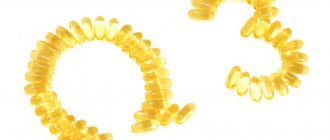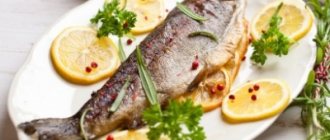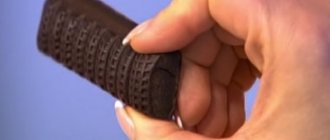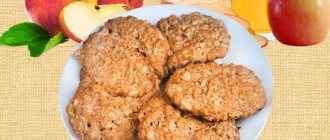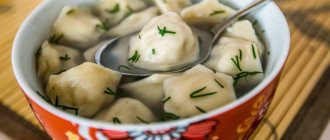Some are confident that halva during breastfeeding has a healing effect and healing properties. Indeed, the grains in this product increase the amount of milk, making it healthy and nutritious. On the other hand, halva can cause allergies in the baby, since seeds and nuts contain a strong allergen. Let's figure out whether a nursing mother can eat halva.
What is halva made from?
Halva is a sweet with a centuries-old history. This dish was first produced in Asian countries. Due to the abundance of recipes, its preparation can be based on sesame seeds, sunflower seeds, pistachios, almonds, hazelnuts, and peanuts. For taste variety, cocoa and raisins can also be added to it.
During the cooking process, the main components are ground into a paste. Honey is already mixed into it. However, in modern industrial production, honey is replaced with sugar, sweeteners, and caramel mass.
Useful properties of components
- Sunflower seeds. One of the most common components of halva. They have not only nutritional but also medicinal properties. The seeds contain thiamine, zinc, fluorine, calcium, iron, amino acids, vitamins E, B6, B9, B1, B2, C, and D. In addition, they are rich in potassium and magnesium. Thanks to their composition, sunflower seeds strengthen the immune system, speed up metabolism, and increase performance. They will also be useful for problems in the sexual sphere, high blood pressure, and poor vision.
- Sesame. Also known under the fabulous name “sesame”. Sesame seeds are rich in calcium, phosphorus, iron, magnesium, and potassium. This seed contains B vitamins, vitamin E, A, C. Sesame is famous for its healing properties: preventing cancer, reducing the concentration of cholesterol in the blood, increasing immunity, activating metabolism, and normalizing the functioning of the digestive system.
- Peanut . Peanuts contain vitamins from groups D, B and PP. In addition, it is rich in various types of amino acids. However, it is fraught with some danger. After all, many people are severely allergic to peanuts. In addition, most varieties of modern peanuts are genetically modified, and therefore there is no talk about the benefits of this product.
- Almond. Of all the nuts, they have the least calories. Rich in vitamin E, all B vitamins, manganese, magnesium, phosphorus, zinc, calcium and iron. Almonds support heart function, are good for blood vessels, the nervous system, and the brain. This nut is especially useful for bone tissue, due to its high content of calcium, phosphorus and magnesium.
Composition and effect on the body
By halva, confectioners mean a group of sweets that are made from sunflower seeds, sesame seeds, and nuts.
All types of halva contain vitamins and minerals:
- B2 – necessary for the full functioning of the thyroid gland.
- PP – participates in the metabolism of proteins, in the synthesis of amino acids, dilates blood vessels.
- B1 - plays an important role in the functioning of the cardiovascular and digestive systems.
- E – immunomodulator.
- Calcium – is involved in blood clotting, hormone formation, and bone formation.
- Magnesium is important for the normal functioning of the nervous system and protein synthesis.
- Sodium – maintains normal water and acid-base balance.
- Phosphorus is necessary for the formation of bone tissue and cell division.
- Iron – transports oxygen through the blood.
Vitamins, macro- and microelements are necessary for the body of a nursing woman. So, iron will help get rid of anemia, which often occurs towards the end of pregnancy. Calcium and B vitamins improve the condition of bones, hair, and teeth.
Potential danger
Despite the abundance of beneficial properties of the components, halva for a nursing mother may be fraught with some danger. Therefore, before using it, you need to find out about all the contraindications:
- High calorie content . This sweetness is a rather complex product, so as a result of its consumption, the baby may experience constipation or colic. However, this contraindication is relevant only for the first months of life. In addition, if a mother wants to maintain her figure and avoid large weight gain, she should eat it in small quantities, calculating the daily calorie intake.
- Allergy . An allergy to halva is explained by the presence of certain allergens in its composition, especially peanuts. Such a reaction can occur, even if it has not been observed before, if it is consumed excessively. Therefore, halva should be introduced into the diet during breastfeeding gradually, observing not only the reactions of the mother, but also the baby.
- Foreign components . Apart from natural ingredients? it may contain stabilizers, flavors, flavor enhancers and other chemicals. That is why you should not save on the manufacturer’s brand, the quality of which can be analyzed based on the price of the product.
How to buy a quality product
You need to choose the right sweet, paying attention to the composition: it should contain sunflower seeds, sugar or molasses. There should be no flavors or dyes. If the role of molasses is replaced by honey, you need to make sure that the baby is not allergic to it.
Appearance is also important. If there is noticeable discharge of liquid, the product was stored incorrectly and is unfit for consumption, especially if it has a bitter aftertaste. This means that the components have oxidized and can cause poisoning. Such halva should absolutely not be eaten while breastfeeding, and in general it is better to throw it away.
The product should not contain seed husks. If it occurs, the manufacturer violated the production technology, that is, his product cannot be trusted.
Is it possible to have halva during lactation?
It is believed that moderate consumption of this product improves lactation and improves the quality of breast milk. Thanks to its abundance of nutritional properties, this sweet helps a nursing mother fight fatigue. Due to its high content of vitamins and microelements, it helps improve the condition of nails, hair and skin.
The components of this sweet stimulate the digestive system, activate blood circulation, and thanks to vitamin B1, help cope with nervous system disorders.
Despite the positive effect of halva on breastfeeding, it should be introduced gradually, with sufficient caution.
Types of halva and their differences
A nursing mother can try most types of halva, but with caution.
Sunflower
The most famous is sunflower halva. This is due to the fact that a lot of sunflower seeds are grown. For example, Russia receives 9 million tons of them per year, ranking second in the world after Ukraine.
A nursing mother needs to saturate her body with useful elements. You can strengthen your heart with magnesium, which in 50 g of sunflower halva contains 22% of the daily requirement. A high iron content, 50 g of which is 92% of the daily requirement, will solve the problem of low hemoglobin. However, the treat is 45% fat and has 540 kcal. This should be taken into account by women who are working to regain their previous figure.
Peanut
Calorie content per 100 g – 490 kcal. Peanut halva can be eaten to improve the condition of the skin, since 50 g of the product contains 45% of the daily requirement of vitamin PP. Manganese, which in 50 g of this product contains about 48% of the daily requirement, will help protect a weakened body from increased bone fragility. Many people fear that peanuts contain glutamic acid, which can cause allergies.
Research has found no association between maternal food intake during breastfeeding and late-onset peanut allergy in infants [1].
Sesame
Sesame halva is made from sesame seeds, tahini - from cake. Contains calcium (per 50 g of product - about 60% of the daily requirement), has a pleasant taste, and rarely causes allergies. Due to the high content of vitamin B1, a woman will provide the body with the necessary energy (50 g - 42% of the daily requirement). Its calorie content per 100 g is 470 kcal.
It is best for a nursing mother to eat sesame sweets, but the portions should still be small.
Introduction of halva into the diet during breastfeeding
Pediatricians give several recommendations when introducing halva during breastfeeding. The most important of them:
- This product should be introduced into the diet not from the very first days of breastfeeding, but after a few weeks;
- before consumption, it is necessary to check for allergic reactions in the mother or baby by eating a small piece;
- in the absence of redness and rashes on the skin, you can begin to gradually introduce it into the diet;
- the maximum daily intake of the product should not exceed 100-130 grams;
- In the first month, a nursing mother should prefer sunflower or sesame halva.
Effect on lactation
It has been scientifically established that food has no effect on the amount of milk produced, although it was previously believed that eating the same halva could enhance lactation. But the components included in the composition enter the blood and then into the milk of a nursing mother, which affects its nutritional value.
It is advisable to check the absence of negative effects of halva during pregnancy, before breastfeeding. A woman’s good health after a small piece indicates her body’s tolerance to the dessert. The qualitative and quantitative composition of nutrients varies depending on the incoming ingredients. Depending on this, the nutritional value of breast milk is adjusted.
Benefits of the product for breastfeeding
The delicacy contains vitamins C, E, D, F, PP, group B. Mineral nutrients include magnesium, iron, calcium, phosphorus, and potassium. The presence and quantity of nutrients depends on the composition; it can be supplemented with antioxidants, amino acids, fiber, and dietary fiber.
Benefits of halva for the body during breastfeeding:
- sunflower – increases immune defense, normalizes the cardiovascular and nervous systems, improves the absorption of carbohydrates, and has a beneficial effect on hair growth;
- sesame – reducing the risk of developing cancer, normalizing the functioning of the respiratory system, getting rid of migraines;
- peanut – improves brain function and cardiovascular system;
- pistachio – antioxidant properties, normalization of the activity of the endocrine glands;
- almond – the lowest calorie, strengthens the musculoskeletal system.
Does halva increase the fat content of breast milk?
Despite the fact that the delicacy is a very high-calorie product, its use during breastfeeding does not in any way affect the fat content of mother's milk. It has been scientifically established that this indicator depends on the needs of the growing body and changes in accordance with the need for fat at a certain point in the child’s development. The fat content of breast milk is 3.5-4% and does not change due to the diet of the nursing woman.
Halva has no effect on the fat content of breast milk
Harm and possible negative reactions
The delicacy can cause the greatest negative impact to a newborn’s body, because in the first month the digestive tract adapts to a new type of diet and cannot properly process most foods. As the baby's gastrointestinal tract develops, the nursing mother has the opportunity to try new foods.
You should not consume halva if you are overweight or allergic to nuts or other ingredients. Industrially produced treats are undesirable because they may contain harmful dyes, flavors, flavor enhancers, and stabilizers.
On a note! The greatest harm to the baby will be caused not by the product itself, but by the incorrect introduction of halva into the diet during breastfeeding. A large amount of new sweets can cause digestive upset and an allergic reaction.
Making halva at home
Undoubtedly, all types of store-bought halva, no matter how high quality they are, cannot compare with homemade ones.
Homemade sunflower seed halva
To prepare this type of sweet you will need:
- 450 grams of sunflower seeds (peeled);
- 400 grams of semolina;
- half a glass of sunflower oil (it is better to use homemade, but without bitterness);
- half a glass of milk;
- 300 grams of sugar;
- 50 grams of raisins, 50 grams of whole almonds.
Preparation:
- First you need to fry the seeds in a frying pan and grind them using a blender.
- Fry the semolina in a dry frying pan.
- Mix milk, sugar, sunflower oil in a bowl. Heat the mixture over the fire, then add semolina and seed gruel to it.
- Add raisins and almonds pre-soaked in water to the mixture.
- Distribute the resulting mixture onto a baking sheet, leave to cool, and then put it in the refrigerator for an hour. For decoration, if desired, you can stick whole nuts (hazelnuts, almonds, pistachios, cashews) into the still hot mixture and sprinkle with sesame seeds.
Homemade sesame halva (tahini)
To prepare this type of sweet you will need the following ingredients:
- 250 grams of sesame seeds;
- 250 grams of flour;
- 100-150 grams of sugar;
- 50 ml milk;
- 3 tbsp. vegetable oil;
- a little vanilla sugar.
Preparation:
- First you need to fry the sesame seeds until golden brown (just like with sunflower halva) and grind it in a blender.
- Fry the flour in a dry frying pan.
- Prepare syrup by heating milk and sugar.
- Mix sesame paste with fried flour, pour syrup and vegetable oil into this mixture.
- After mixing the resulting mixture until smooth, place it in a thin layer on a baking sheet or cutting board. It is better to cut it immediately, until it cools completely and hardens into separate bars. Otherwise, later when cutting, it will crumble very much.
- Leave to cool for several hours and enjoy eating!
Homemade peanut halva
To prepare this product you will need the following ingredients:
- 1 cup peanuts;
- 0.5 cups sugar;
- 0.5 cups flour;
- 50 ml water;
- 50 ml sunflower oil;
- vanilla sugar to taste if desired.
Preparation:
- Peanuts can be roasted either in a frying pan or by placing them in the oven until golden brown appears. It can be removed from the heat when the husks begin to peel off.
- The cooled peanuts are crushed in a blender.
- At the same time, the flour is fried in a dry frying pan until it turns yellowish.
- Dry ingredients are mixed.
- A syrup is prepared from sugar and water over a fire. After removing from heat, add sunflower oil.
- Dry and liquid ingredients are combined into one mass, kneaded, and placed on a baking sheet until completely cooled. For beauty, you can sprinkle the not yet hardened halva with sesame seeds or grated pistachios.
These recipes are quick and easy to make, making them great for nursing mothers. In addition, when preparing such sweets at home, you can be absolutely sure that all the ingredients are of good quality and will not harm the baby’s health.
However, if you don’t have time to prepare homemade halva, you can choose it in the store. But to make a quality choice, you need to know how to determine the quality of a product.
DIY cooking
The sweetness will be much healthier if you prepare it yourself. The recipe is simple, and the cooking process does not take much time.
Algorithm of actions:
- fry a glass of peanuts;
- fry a glass of flour;
- Peanuts are peeled and crushed in a food processor;
- add flour to the peanuts and mix;
- a glass of water, a glass of sugar and a little vanilla are cooked after boiling for 5 minutes;
- a glass of vegetable oil is poured into the syrup;
- the dry mixture of nuts is combined with syrup and mixed;
- the mass is laid out in a mold and compacted;
- After cooling, the delicacy is ready.
The dish may not be completely similar to store-bought sweets, since manufacturers are more likely to use molasses. But relatives will appreciate the taste, and a nursing mother is not afraid to eat halva that she prepared with her own hands.
